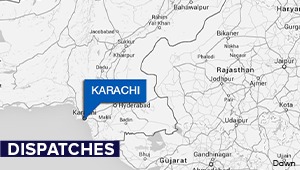

By Ali Haider Saleem, Research Associate at the China-Pakistan Study Centre, Institute of Strategic Studies Islamabad (ISSI).
01 March 2021
The ASEAN region is politically and economically vital for the leading powers of the world. The United States has a strong military presence in the region while the ASEAN economies support millions of U.S. jobs as it is one of the largest export destinations of U.S. goods and services. On the other hand, the ASEAN economies have become highly dependent on China in recent years despite the tensions surrounding South China Sea. In the COVID-19 era, the movement between China and the ASEAN region has been relatively less restricted compared with other parts of the world. This has supported the expansion of trade between the two while allowing Beijing to exert greater influence in the region.
As China’s traditional largest trading partner, EU, faced an economic slump after the outbreak of coronavirus, the ASEAN region became China’s leading partner in the first quarter of 2020. In 2019, ASEAN overtook the United States to become China’s second largest trading partner with the volume of trade reaching $644 billion. Kurt Campbell, President Joe Biden’s assistant Secretary of State for East Asian and Pacific Affairs, states that “although Indo-Pacific states seek U.S. help to preserve their autonomy in the face of China’s rise, they realise it is neither practical nor profitable to exclude Beijing from Asia’s vibrant future”.
China is keen to strengthen its ties with ASEAN and augment economic cooperation. During a speech, Chinese President Xi Jinping labelled China-ASEAN relationship as “the most successful and vibrant model for cooperation”. He added that “China continues to regard ASEAN as a priority in its neighbourhood diplomacy and a key region in high-quality Belt and Road cooperation”.
The recent past has been dubbed as the golden era of China-ASEAN relationship and the Chinese leadership is determined to steer this relationship towards “diamond-era”. Despite the global economic slowdown, Chinese investments in ASEAN surged in 2020. China’s direct investment in ASEAN in the first three quarters of 2020 crossed $10 billion while investment by countries like Singapore, Thailand and Malaysia in China also increased considerably.
The ASEAN region is critical for President Xi’s Belt and Road vision. ASEAN nations fall within the Bangladesh-China-India-Myanmar Economic Corridor and the China-Indochina Peninsula Economic Corridor. Speaking at Asian Political Parties’ Special Conference on the Silk Road in 2015, the Cambodian Prime Minister mentioned that, “Silk Road is synonymous with peace, openness, inclusion and mutual understanding. All the countries alongside will benefit from it. This proposal shows China’s determination in boosting the interconnection of countries and the exchange among the people”.
With the United States stepping away from multilateral arrangements, China seized the opportunity to consolidate its growing economic influence. In November 2020, 15 countries including China and 10 Southeast Asian countries formed Regional Comprehensive Economic Partnership (RCEP). It is the world’s largest trade bloc and covers almost a third of the global economy. Chinese Premier Li Keqiang described the agreement as “a victory of multilateralism and free trade”. The agreement reduces a range of tariffs and adds multiple incentives to bolster trade amongst the members. The Brookings Institution estimates that RCEP could add $500 billion to world trade by 2030.
Robert Ward from International Institute for Strategic Studies considers RCEP a geopolitical win for China as tighter integration will bring the region closer into China’s economic orbit. He adds that the deal may attract outside investment in the region which will bolster China’s resilience to trade tensions and decoupling from United States. The deal also means that competing in Asia will now be more difficult for U.S. and other countries that are not part of RCEP.
During his presidency, Barack Obama pushed the Trans-Pacific Partnership (TTP). It included a range of environmental, human rights, intellectual property and labour regulations that would have enhanced U.S. competitiveness. If China’s major partners signed it then Beijing would have been forced to enter it as well but the strategy fell apart when President Trump took charge and withdrew the U.S. from TTP. On the other hand, the RCEP does not contain detailed provisions related to environmental and labour standards. Eswar Prasad, former head of the International Monetary Fund’s China Division, points out that “the U.S. now has even less leverage to pressure China into modifying its trading and economic practices.”
The U.S. Chamber of Commerce also raised alarm for the U.S. economy after the RCEP was signed. It released a statement which said: “The U.S. Chamber welcomes the trade-liberalizing benefits of the newly signed Regional Comprehensive Partnership Agreement but is concerned that the United States is being left behind as economic integration accelerates across the vital Asia-Pacific region.” It also stated that China has become the most important trading partner for most of the Asia-Pacific and this development will cement this position.
Building on the success of its geo-economic strategy in the region, China is now advancing its COVID-19 vaccine diplomacy. Huang Yanzhong, a global health expert at Council on Foreign Relations, said “China could use its vaccines to become the global leader in ensuring equitable access to vaccines, bridging the gap between the developed and developing world. Certainly, this would help improve China’s image and project soft power in those countries.” Chinese government has pledged to make Chinese vaccines a global public good and has backed this stance by donating vaccines to poorer ASEAN countries such as Myanmar, Laos and Cambodia.
According to a survey, China is seen as having provided the most help to the region during the pandemic. Majority of the respondents also regarded China as the most influential economic power in the region. ASEAN countries are embracing China’s economic rise and this will improve the economic environment across Asia. These trends suggest that prolonged confrontation with China may not be an ideal approach for the new U.S. administration.
Disclaimer: The views expressed in the article are of the author and do not necessarily represent the institute’s policy.

